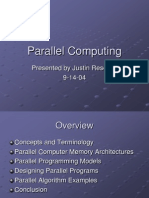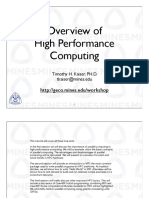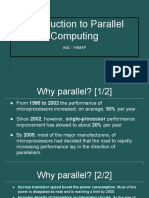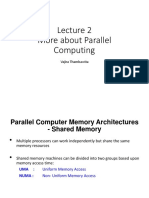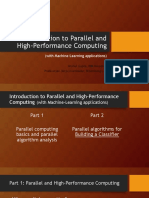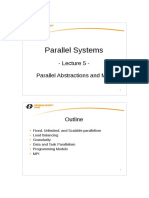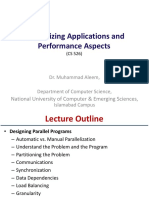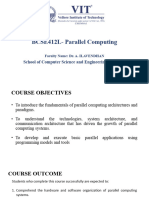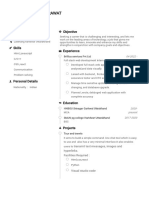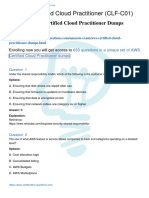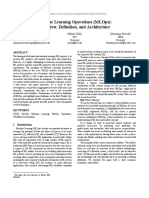0% found this document useful (0 votes)
11 views33 pages002 IntroHPC
The document is an introduction to High Performance Computing (HPC) focusing on its importance, parallel computing concepts, and programming models. It discusses the need for parallel computing due to the limitations of single processors and outlines various parallel architectures and programming approaches. The document emphasizes the unique strategies required for different problems and the significance of understanding dependencies and communication in parallel algorithms.
Uploaded by
nilmarathe2307Copyright
© © All Rights Reserved
We take content rights seriously. If you suspect this is your content, claim it here.
Available Formats
Download as PDF, TXT or read online on Scribd
0% found this document useful (0 votes)
11 views33 pages002 IntroHPC
The document is an introduction to High Performance Computing (HPC) focusing on its importance, parallel computing concepts, and programming models. It discusses the need for parallel computing due to the limitations of single processors and outlines various parallel architectures and programming approaches. The document emphasizes the unique strategies required for different problems and the significance of understanding dependencies and communication in parallel algorithms.
Uploaded by
nilmarathe2307Copyright
© © All Rights Reserved
We take content rights seriously. If you suspect this is your content, claim it here.
Available Formats
Download as PDF, TXT or read online on Scribd
/ 33
